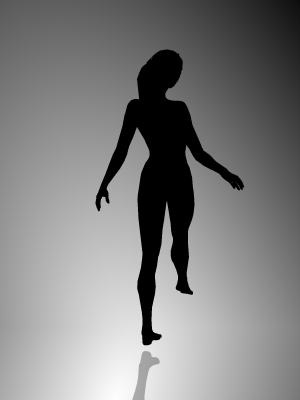
venerdì 5 dicembre 2008
lunedì 24 novembre 2008
giovedì 9 ottobre 2008
Un giorno un Angelo scese sulla terra dal cielo e, con un solo, ampio gesto, diede loro la vita. L'Angelo disse loro: 'Siete stati pazienti per così tanto tempo, sopportando estati torride e gelidi inverni.... Come premio per la vostra pazienza, vi è stato concesso di vivere per trenta minuti per fare la cosa che avete più desiderato fare in tutto questo tempo...'
Lui la guardò, lei lo guardò, e tenendosi per mano corsero giù per la collina lungo il sentiero.
L'angelo restò ad attendere pazientemente, mentre lontano si sentivano rumori fra i cespugli, gemiti e sospiri di piacere. Dopo quindici minuti, i due ritornarono, sempre tenendosi per mano, senza fiato e sorridendo felici.
Allora l'Angelo disse loro:
'Vi sono rimasti altri quindici minuti: volete farlo di nuovo?'
Lui la guardò e le chiese dolcemente: 'Vuoi?'
E lei con un dolce sorriso gli rispose:
'Oh, sì, facciamolo di nuovo.... ma questa volta cambiamo posizione. Stavolta il piccione lo tengo fermo io e tu gli caghi in testa!!'
mercoledì 8 ottobre 2008
Dick Joke
lunedì 29 settembre 2008
Trofim Lysenko
Trofim Denisovich Lysenko (Russian: Трофи́м Дени́сович Лысе́нко) (September 29, 1898–November 20, 1976) was an agronomist who was director of Soviet biology under Joseph Stalin. Lysenko rejected Mendelian genetics in favor of the hybridization theories of Russian horticulturist Ivan Vladimirovich Michurin, and adopted them into a powerful political scientific movement termed Lysenkoism. His unorthodox experimental research in improved crop yields earned the support of Soviet leadership, especially following the famine and loss of productivity resulting from forced collectivization in several regions of the Soviet Union in the early 1930s. In 1940 he became director of the Institute of Genetics within the USSR's Academy of Sciences, and Lysenko's anti-Mendelian doctrines were further secured in Soviet science and education by the exercise of political influence and power. Scientific dissent from Lysenko's theories of environmentally acquired inheritance was formally outlawed in 1948, and for the next several years opponents were purged from held positions, and many imprisoned. Lysenko's work was officially discredited in the Soviet Union in 1964, leading to a renewed emphasis there to re-institute Mendelian genetics and orthodox science.
Though Lysenko remained at his post in the Institute of Genetics until 1965,[1] his influence on Soviet agricultural practice declined by the 1950s. The Soviet Union quietly abandoned Lysenko's agricultural practices in favor of modern agricultural practices after the crop yields he promised failed to materialize. Today much of Lysenko's agricultural experimentation and research is largely viewed as fraudulent.
...
venerdì 19 settembre 2008
Goldbach's conjecture
...On 7 June 1742, the Prussian mathematician Christian Goldbach wrote a letter to Leonhard Euler (letter XLIII) [2] in which he proposed the following conjecture:
- Every integer greater than 2 can be written as the sum of three primes.
He considered 1 to be a prime number, a convention subsequently abandoned.[3] A modern version of Goldbach's original conjecture is:
- Every integer greater than 5 can be written as the sum of three primes.
Euler, becoming interested in the problem, replied by noting that this conjecture is equivalent to another version:
- Every even integer greater than 2 can be written as the sum of two primes,
adding that he regarded this an entirely certain theorem ("ein ganz gewisses Theorema"), despite being unable to prove it.[4]
Euler's version is the form in which the conjecture is usually expressed today. It is also known as the "strong", "even", or "binary" Goldbach conjecture, to distinguish it from a weaker corollary. The strong Goldbach conjecture implies the conjecture that all odd numbers greater than 7 are the sum of three odd primes, which is known today variously as the "weak" Goldbach conjecture, the "odd" Goldbach conjecture, or the "ternary" Goldbach conjecture. Both questions have remained unsolved ever since, although the weak form of the conjecture appears to be much closer to resolution than the strong one. If the strong Goldbach conjecture is true, the weak Goldbach conjecture will be true by implication.[3] ....

